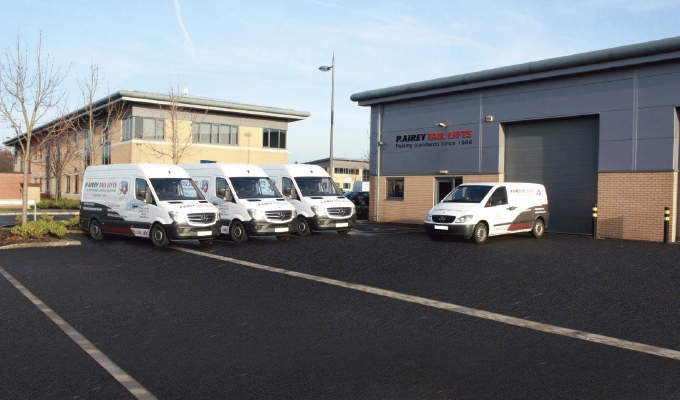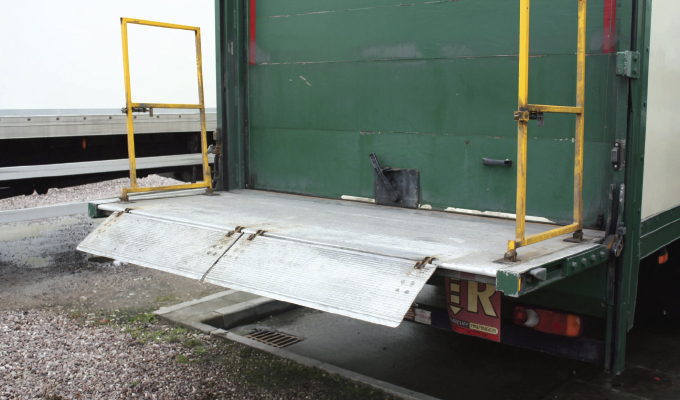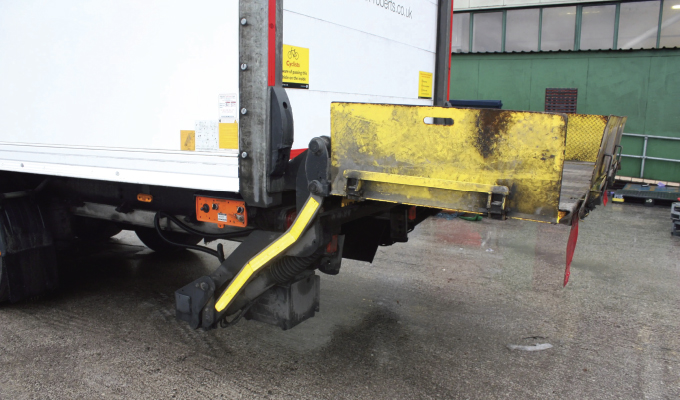Tail lifts, also known as liftgates, have become indispensable tools for businesses across various industries. By providing a practical solution for handling heavy loads, tail lifts offer a range of benefits that can significantly impact the productivity and profitability of businesses.
WHAT ARE TAIL LIFTS?
These pieces of equipment are mechanical devices specifically designed to simplify the process of loading and unloading heavy goods onto trucks, vans, or trailers. They are typically installed at the rear end of a vehicle, providing a reliable platform for quickly raising and lowering cargo.
Tail lifts, as highlighted by P. Airey Tail Lifts, a specialist in this field, are available in a wide array of configurations designed to cater to diverse business requirements.
Among the most prevalent variations are hydraulic, cantilever, and tuck-away lifts. Each type offers distinct features and benefits, allowing businesses to choose the ideal solution that aligns with their specific operational needs.
Hydraulic lifts use hydraulic cylinders to raise and lower the platform smoothly, while cantilever lifts feature a pivoting arm mechanism. Tuck-away lifts, on the other hand, neatly fold away when not in use, maximizing the vehicle’s available space.
Typically, these workhorses are equipped with sturdy platforms capable of supporting substantial weight capacities, ensuring the secure transportation of goods. Some tail lifts also have features such as safety rails, non-slip surfaces, and control panels for easy operation.
Tail lifts can be manually operated or powered by electricity, making them suitable for various applications. From logistics companies dealing with heavy palletized loads to local businesses delivering appliances or furniture, tail lifts have become essential for efficient and reliable loading and unloading operations.

TAIL LIFT BENEFITS
Integrating tail lifts into your business processes can yield a multitude of benefits that positively impact efficiency and overall productivity. Some benefits include:
Enhanced Efficiency
Tail lifts streamline the loading and unloading process, reducing time-consuming manual labor and increasing effectiveness. By providing a trustworthy platform for raising and lowering heavy goods, tail lifts enable quicker and smoother cargo handling, optimizing workflow and minimizing delays. This This translates to improved turnaround times, allowing operators to easily handle larger volumes of goods and meet tight delivery schedules.
Worker Safety
Manual handling of heavy loads poses a significant risk to the well-being of employees. Tail lifts eliminate the need for strenuous lifting and lowering, reducing injuries, strains, and back-related issues among workers. Prioritizing worker safety not only fosters a healthier work environment but also minimizes potential liabilities and downtime resulting from injuries.
Versatility
Lifts accommodate a diverse range of cargo, allowing businesses to transport various goods regardless of size, weight, or shape. Whether it’s palletized loads, heavy machinery, appliances, or furniture, these devices provide a reliable means of lifting and transporting items that would otherwise require cumbersome manual effort. This versatility opens up new opportunities for businesses to expand their offerings and cater to a broader customer base.
Customer Satisfaction
Swift and efficient loading and unloading operations contribute to improved customer satisfaction. Reliable delivery times, intact merchandise, and hassle-free unloading at the destination enhance the overall experience for clients. Investing in tail lifts empowers businesses to ensure their goods reach customers promptly and in excellent condition, fostering positive relationships and customer loyalty.
Maximizing Vehicle Use
This equipment optimizes available vehicle space by enabling efficient stacking and arrangement of goods. With a well-designed system, businesses can make the most of their vehicle’s cargo capacity, maximizing the number of goods transported in a single trip. This reduces the number of journeys required, lowers fuel consumption, and minimizes associated costs, ultimately enhancing profitability.
Compliance with Safety Standards
Many industries have strict regulations regarding the handling and transportation of goods. Tail lifts help businesses meet these standards by providing a secure and controlled method of loading and unloading. Incorporating tail lifts into operations allows companies to demonstrate a steadfast commitment to safety, thereby avoiding potential penalties or legal issues.

MAINTENANCE & SAFETY
Maintaining tail lifts in proper working condition and adhering to safety protocols are crucial aspects of integrating them into business operations. Proper maintenance and safety protocols include:
Inspections
Regular inspections, for instance, ensure the tail lift’s optimal functionality and safety. Schedule comprehensive reviews of critical components, including hydraulic systems, lifting mechanisms, control panels, safety features, and structural integrity. Qualified technicians should conduct these assessments to identify potential issues or signs of wear and tear.
Implement a preventive maintenance program based on the manufacturer’s guidelines. This program should include routine servicing, lubrication, adjustments, and the replacement of worn parts. This practice helps identify and address potential problems before they escalate, reducing the risk of costly repairs and equipment downtime.
Training
Training for tail lift operators is also vital for safe and efficient usage. Develop comprehensive learning programs that cover the correct tail lift operation, safety procedures, weight limits, load-securing techniques, and emergency protocols. Conduct regular refresher training sessions to reinforce safe practices and ensure operators are up-to-date with any technological changes.
Establish clear protocols for loading and unloading operations. Guidelines should cover load distribution, securement, weight limits, and safe work practices, such as using proper lifting techniques and wearing appropriate personal protective equipment (PPE). Emphasize communication and coordination among workers during loading and unloading activities to prevent accidents and maintain a safe working environment.
Service & Inspection Records
Furthermore, register all maintenance and inspection activities related to tail lifts, such as assessments, repairs, servicing, and training sessions. These records help track the maintenance history of each piece of equipment, ensure compliance with safety regulations, and provide a valuable reference for future maintenance and audits.
Emergency Preparedness
Establish emergency procedures specific to tail lift operations to prepare for potential crises. This includes protocols for equipment malfunctions or incidents involving trapped or injured personnel. Conduct regular drills to familiarize workers with emergency procedures, and ensure they are equipped to handle unexpected situations effectively.
With the right balance of customization, maintenance, and safety measures, tail lifts will continue to play a pivotal role in driving business toward success in an ever-evolving marketplace.
FOR MORE INFORMATION
Find out more about tail lifts, visit www.paireytaillifts.co.uk.




